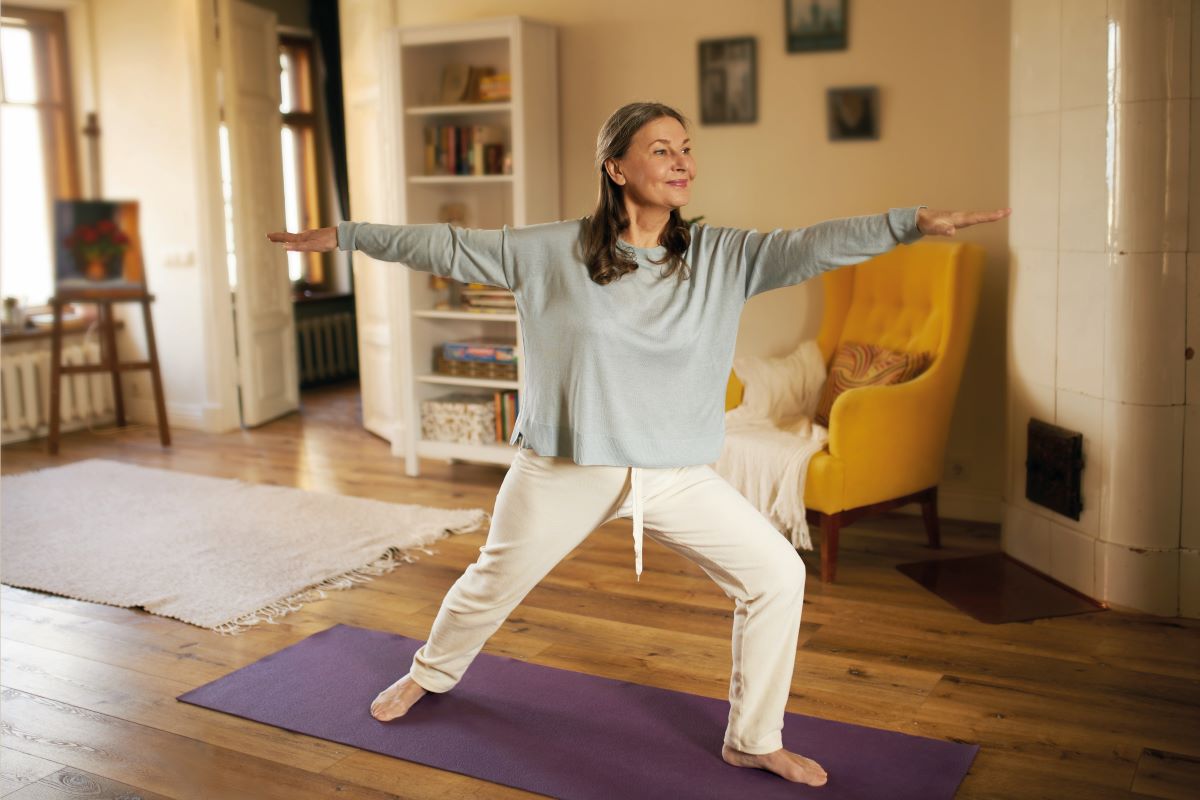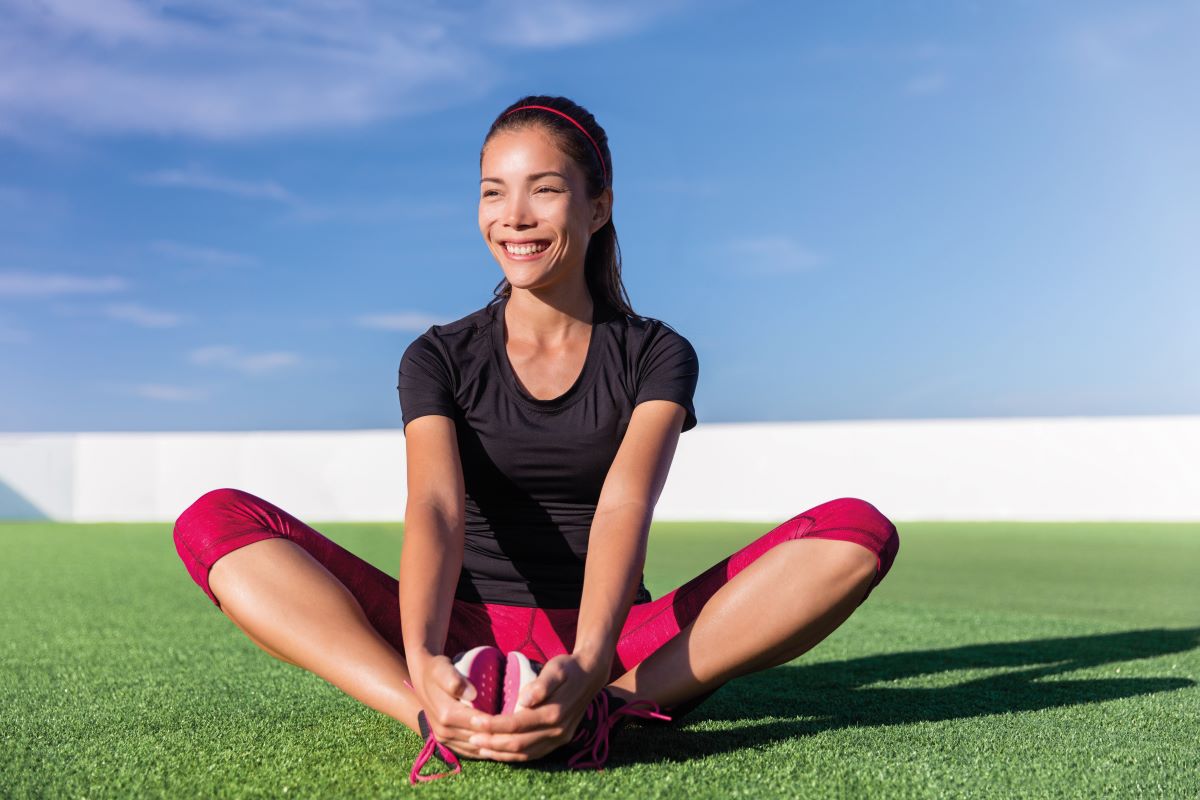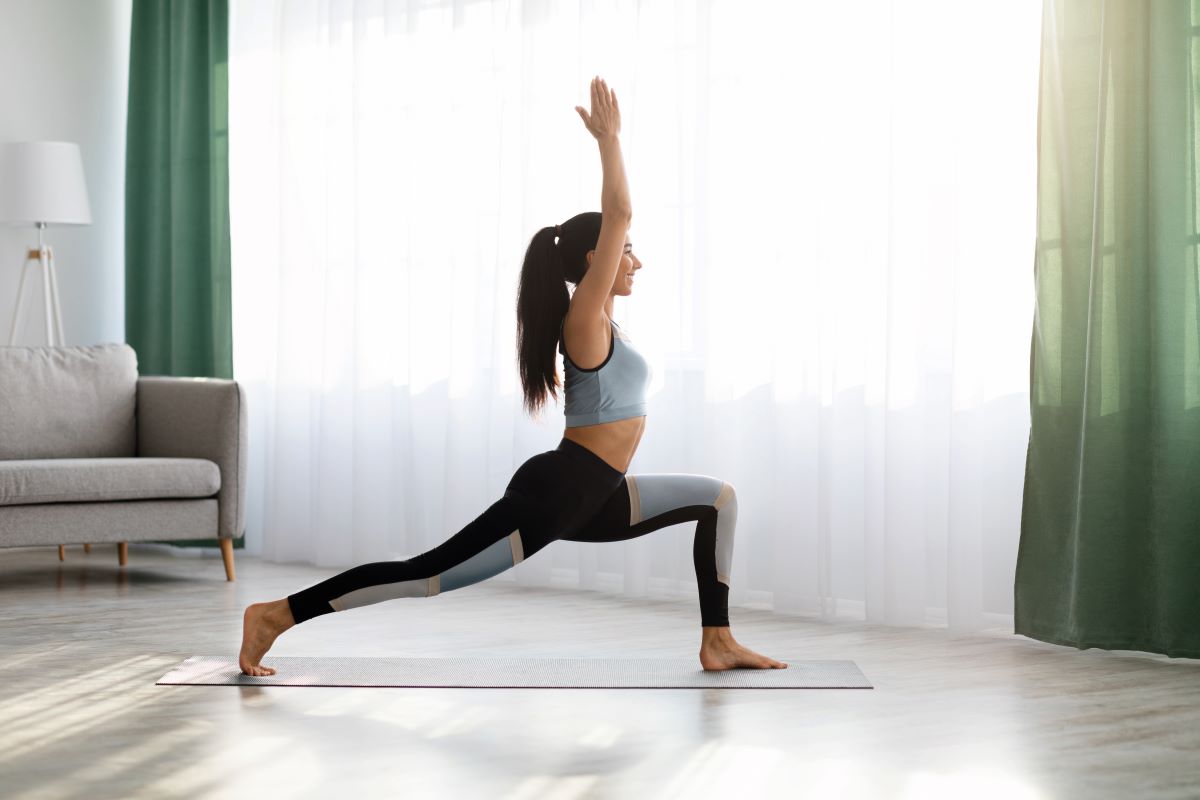What effect does your menstrual cycle have on your fitness? Nutritionist Christine Bailey explains how tweaking your nutrition and fitness in line with your monthly menstrual cycle could boost performance…
Recently there has been a lot of interest around tailoring your fitness and nutrition in line with your menstrual cycle. When it comes to sport performance and your cycle, both perceived and physical factors can play a role. For example, studies report that female athletes feel their performance is worse during the early follicular and late luteal phases, yet research on actual performance measures (using anaerobic, aerobic or strength-related tests) are mixed.
Related: Yoga for PMS: best poses to reduce symptoms
While the research is limited, we do know that hormones play important roles in numerous body systems, including metabolism and energy production, brain performance, joint and bone health, as well as muscle growth and recovery. We all have a different and unique menstrual cycle but, by understanding how fluctuations through the cycle may impact certain areas, you may find tweaking your fitness and nutrition can enhance your results.
It is important to listen to your body. The current research into whether your menstrual cycle impacts performance is mixed and the differences in performance may be marginal for many women. However, you may wish to start tracking your period and notice how you feel and perform throughout your cycle. Experiment with varying your macronutrients (protein, carbohydrates, fats) around key phases to see whether this benefits how you train.

Fitness & nutrition tips for the phases of your menstrual cycle
While every woman has a unique cycle, there’s a common pattern of hormone fluctuations that we can break down into four phases, as follows:
Early follicular phase
This occurs at the start of menstruation (day one of your period) and lasts until just before ovulation. During this phase, oestrogen and progesterone levels are initially low, but moving through this phase, levels of oestrogen increase.
During menstruation, many women find it tough exercising, especially if they struggle with common premenstrual symptoms such as pain, cramps, fluid retention and low energy. As oestrogen rises, your body becomes more efficient at using and processing carbohydrates and building up glycogen stores, so energy improves.
Fitness tips for early follicular phase:
If you do struggle with PMS (premenstrual syndrome) remember that exercise can improve symptoms. As you progress through this phase, you might find you have more energy and strength. This is a great time to focus on increasing performance, whether speed, endurance or strength. The rise of oestrogen towards the end of this phase supports muscle growth and repair, so it’s a good time to increase intensity.
Nutrition tips for early follicular phase:
Iron-rich foods are important, especially in the first few days of your cycle. Good foods include meat, poultry, seafood, beans and pulses, dried apricots, spinach and pumpkin seeds. Magnesium- and potassium-rich foods may help with cramps and low energy, so eat plenty of fruit and vegetables, dark chocolate, nuts, seeds, wholegrains, seafood, bananas and leafy greens.
Also, focus on foods to support sustained energy, especially if you’re endurance training, with slow-releasing carbohydrates such as starchy vegetables (sweet potato, pumpkin, beetroot, carrots) and wholegrains. Include sufficient protein at each meal and snack
to enhance training and recovery.
TRY THIS: City Survivor Vital Minerals Magnesium (£15.95 for 60 capsules)

Follicular phase
This is the time when oestrogen is surging to its peak prior to ovulation. You may feel more energised and positive during this phase. There is also a small rise in testosterone around ovulation, which can further improve strength and mood.
Fitness tips for the follicular phase:
This is a good time to see enhanced performance in both endurance and strength training. This may partly be due to the glycogen-sparing effects of oestrogen and the greater ability to use fat as a fuel. As oestrogen increases so does growth hormone which, like oestrogen, has an anabolic (tissue-building) effect. This is the perfect time to add more weights to your programme to help build muscle.
Nutrition tips for the follicular phase:
As cravings are more controllable during this phase, tailor your diet around your training. Ensure sufficient protein for muscle growth and repair, particularly if you are increasing the weights or intensity. Add in plenty of omega-3 fats, turmeric and polyphenols (as in berries or tart cherry juice) to support recovery after training.
TRY THIS: Bulk Cutting-Edge Protein (£84.99 for 2.1kg)
Early luteal phase
For many women, this phase of the cycle can be the hardest when it comes to both training and eating patterns. Following the ovulatory peak, oestrogen gradually declines and progesterone starts to rise.
Training may feel harder as your core temperature increases and fatigue sets in quicker. Your mood and motivation may be lower as oestrogen declines. This is also not a great time to step on the scales, as your bodyweight may seem higher due to fluid retention. Sleep can also be more disruptive as body temperature rises.
Fitness tips for your early luteal phase:
This is a great time to focus more on restorative exercises which are less energy demanding. Lower-intensity steady state training may be better. Pilates, yoga and more focused skills work are good options. Build in some rest days, too, and reduce the weights in strength-training sessions.
Nutrition tips for your early luteal phase:
During the luteal phase, the body switches to being more efficient at using amino acids and fats compared to carbohydrates. As progesterone is more catabolic, focus on increasing your protein and reducing carbohydrate intake. You may wish to add in an essential amino acid formula to support your energy and recovery.
Consider 5 HTP which supports the production of mood-boosting serotonin and may aid sleep. It can ease cravings. Cut back on salty and processed foods and sugars to prevent fluid retention and blood sugar spikes. Watch your portions – women have been shown to eat more (average of 240 extra calories a day) during this phase.
TRY THIS: Serotonin Support by Ultimate Performance (£12.99 for 60 capsules)

Luteal/premenstrual phase
During this phase both oestrogen and progesterone gradually drop to their lowest levels. Energy levels are likely to be low and you may start experiencing premenstrual symptoms. Blood sugar levels can be more erratic and there is a greater chance of food cravings and/or the temptation to binge eat.
Fitness tips for luteal/premenstrual phase:
Strength and aerobic performance may be worst in the late luteal phase. Studies suggest that strength may only be at 60 per cent of its usual capacity, so you may wish to reduce the weights but increase the reps. This is a good time to add in yoga or Pilates, which may reduce cramps and pain. As oestrogen supports collagen production, lower levels may increase the risk of joint pain and stiffness, so ensure sufficient stretching in your routine.
Resting energy expenditure will be lower, so if you can manage a circuit class or HIIT training, this may help support your body composition goals. Remember that exercise helps boost endorphins and serotonin so, while you may not feel like it, getting out and doing some exercise could benefit your mood and any premenstrual symptoms.
Nutrition tips for luteal/premenstrual phase:
Your body’s preference is to metabolise more fat than carbohydrates during this phase, so lower your intake of carbohydrates and focus more on starchy vegetables and wholegrains to support balanced blood sugar. Ensure sufficient protein to keep you feeling satiated, and take collagen for joint health. Add in nourishing fats such as avocado, olive oil and omega-3-rich seeds and fatty fish.
TRY THIS: WelleCo PMS Elixir (£35)
Menopause nutrition & fitness advice
The decline of oestrogen around menopause has a profound effect on a women’s body, including her overall energy expenditure, utilisation of carbohydrates, mood, joint and bone health, as well as the ability to build muscle.
Both oestrogen and progesterone are involved in muscle growth and repair, which means as levels drop, you may notice it takes longer to see results and longer to recover after training. Protein needs are higher as protein synthesis declines, so you need to consume more for the same effect. Aim for at least 1.5g protein per kg body weight.
TRY THIS: The MenoShake (£49.99 for 500g)
Read more: Exercise + the menstrual cycle: advice and workout plan








